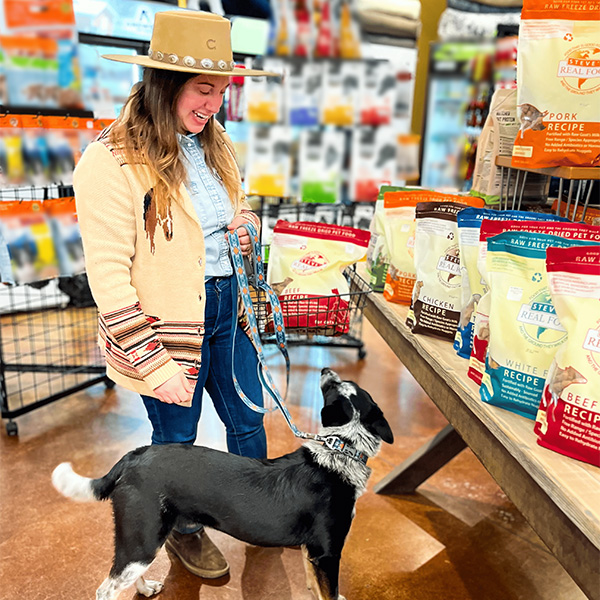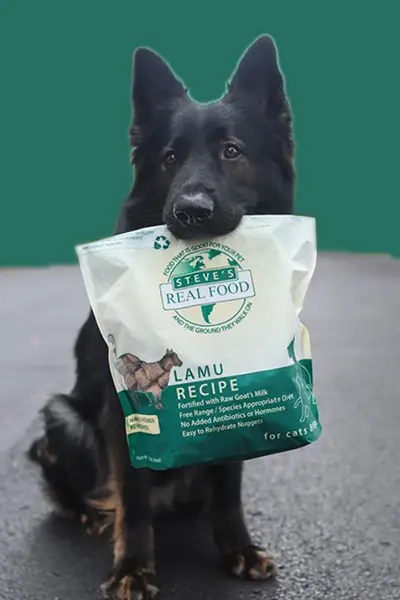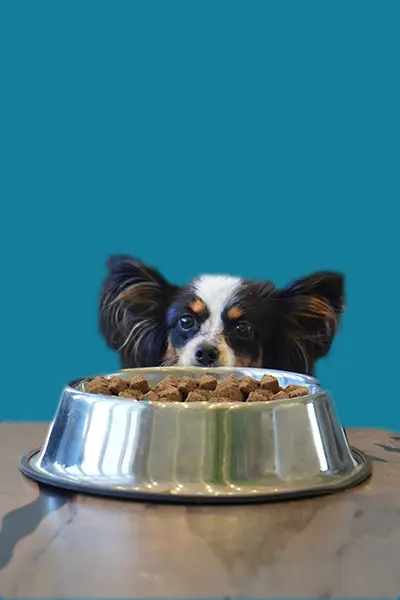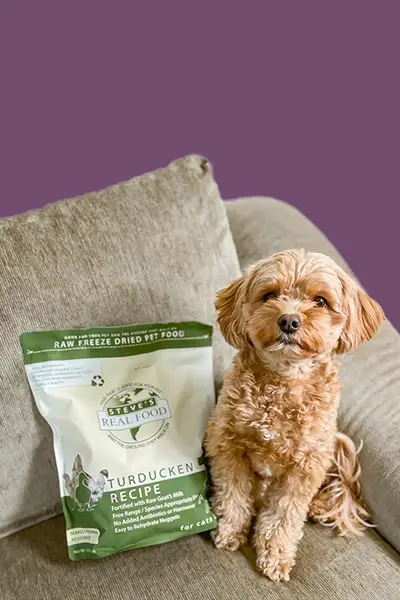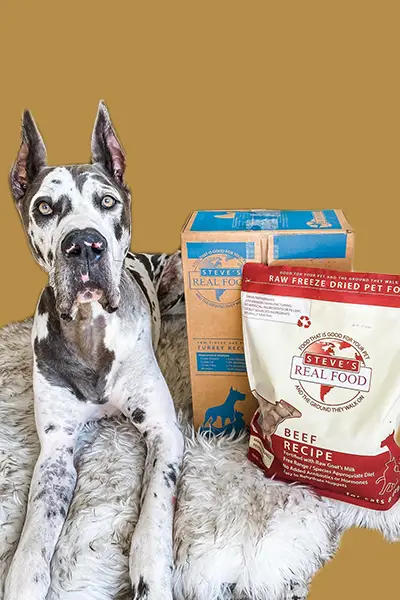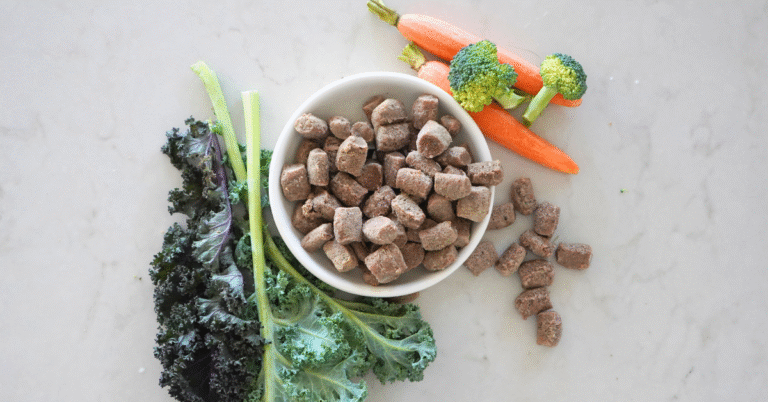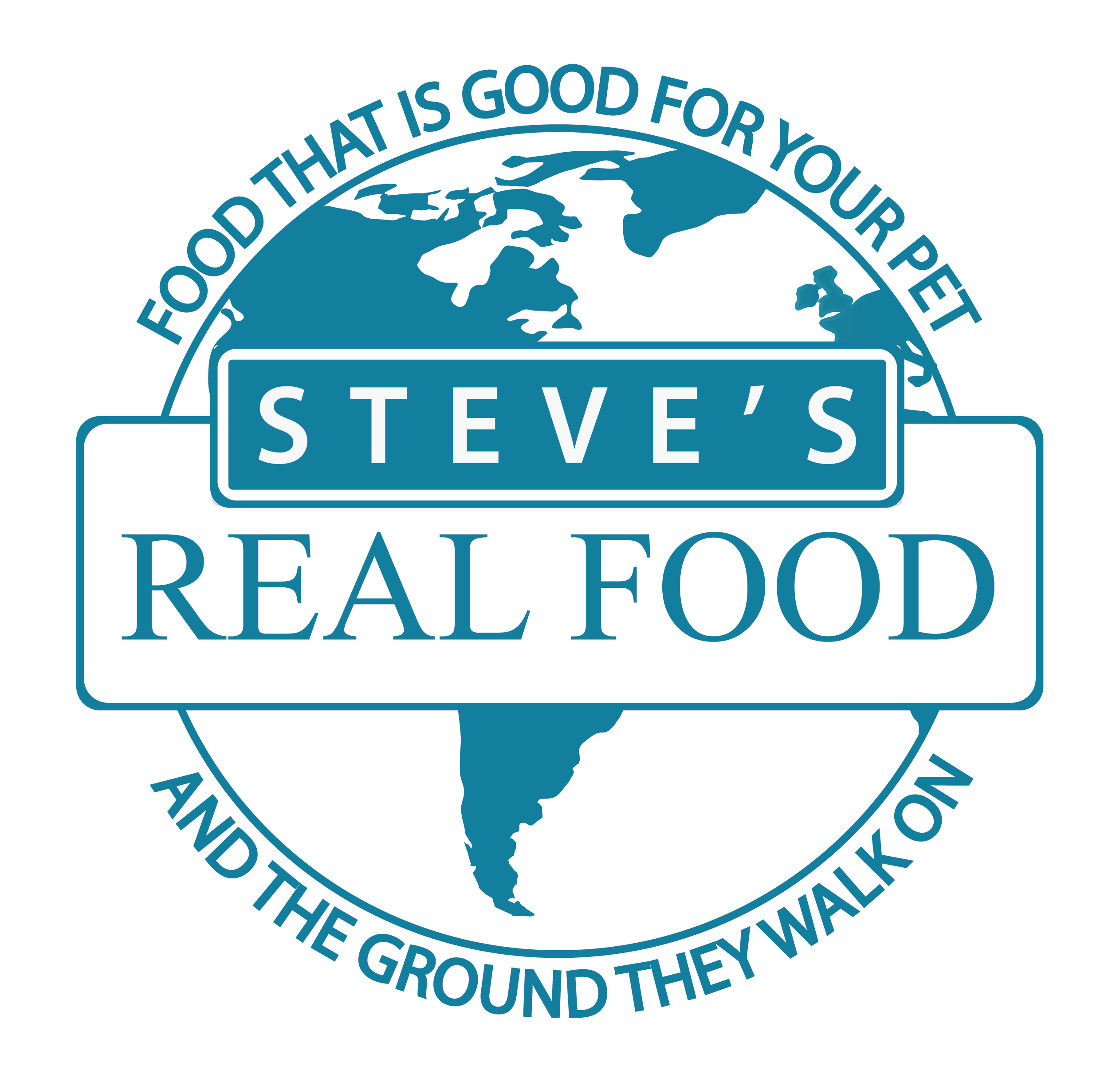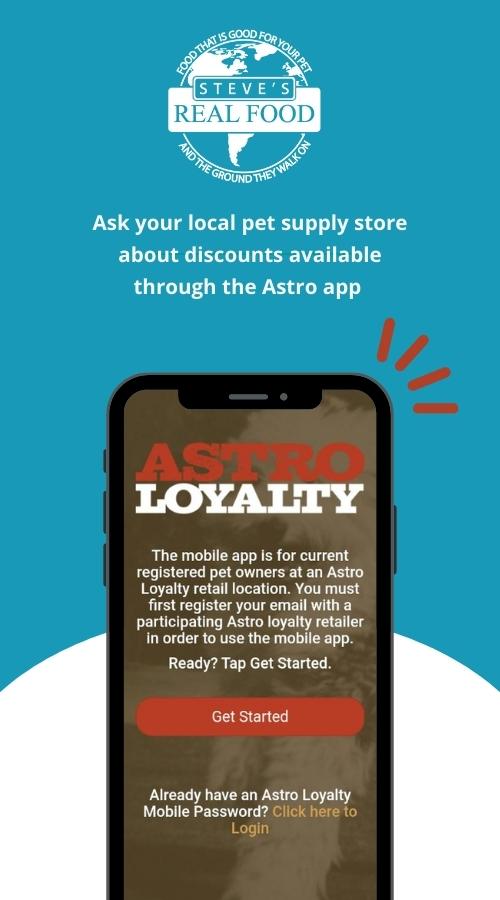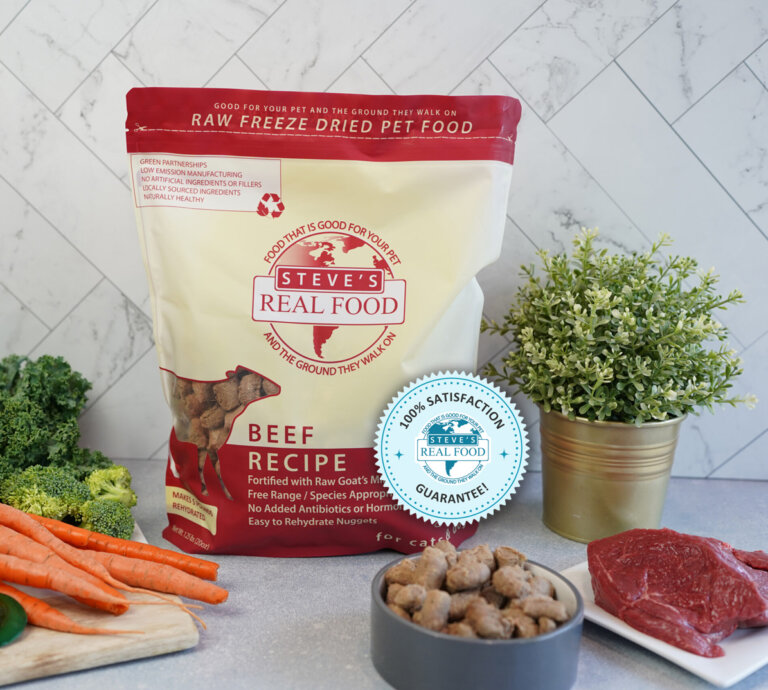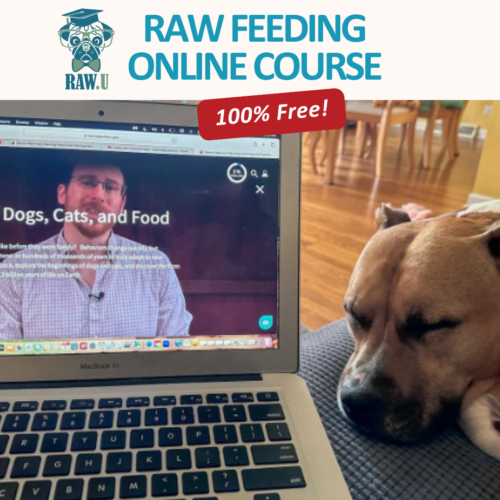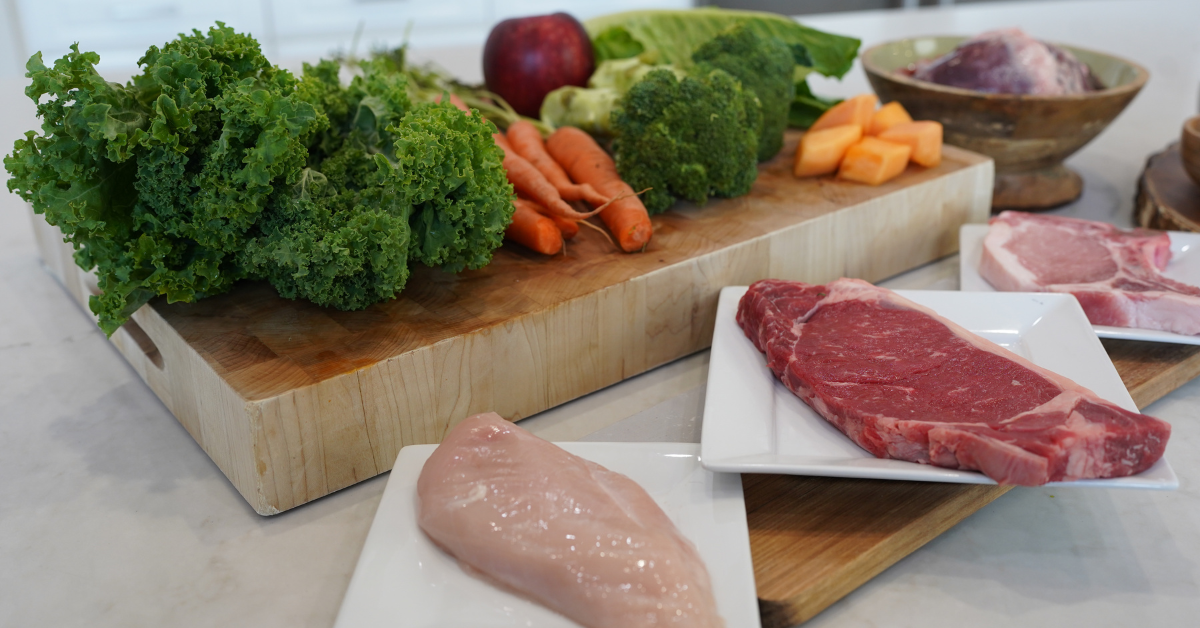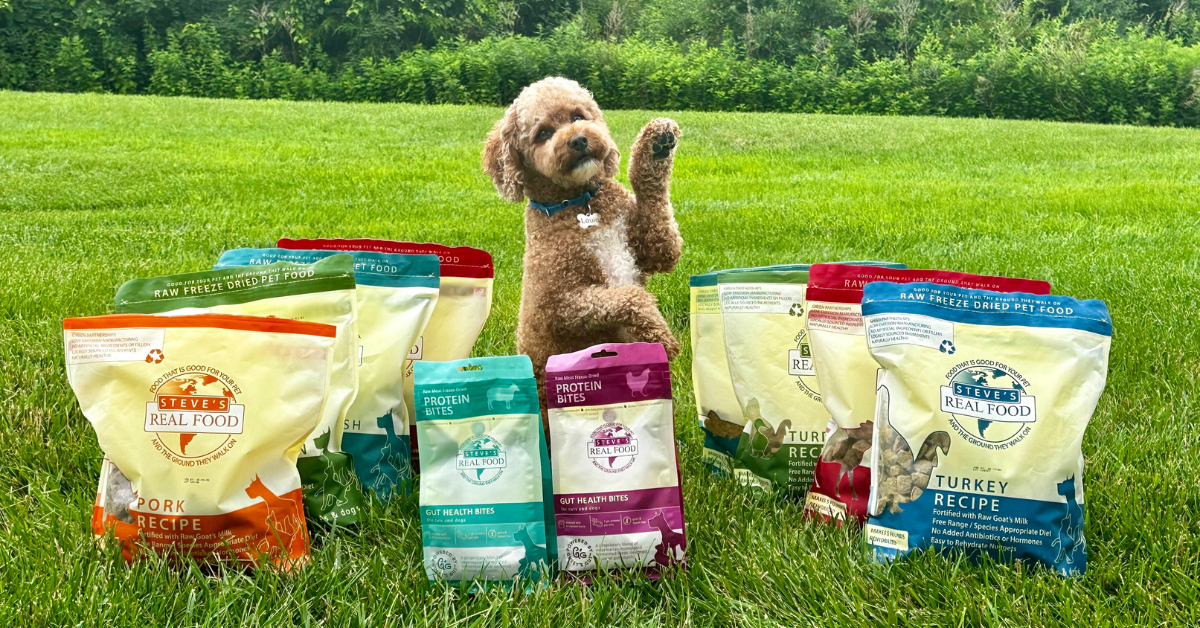Alright, I bought some raw food. Now what do I do with it?
First of all, congratulations! You’ve taken the first step to raw food glory and total pet-health domination!
More seriously, keep the raw food in your freezer until ready to defrost and feed. The food package should give detailed instructions on how best to do so, but the basics are this: store food in the freezer, defrost in the refrigerator, feed defrosted portions to your pet in their bowl (preferably something like stainless steel since it is non-porous and easy to wash). Most people keep one or two feeding portions in their fridge at a time, so there is always a defrosted portion ready to go. To defrost faster, you can add warm water to your pet’s food.
I wouldn’t eat raw meat. Can dogs and cats eat raw meat?
Totally! There are a couple very big reasons why you don’t have to worry about the safety of raw food. The most important one is that dogs and cats are perfectly equipped to deal with raw meat and any bacteria it may include. They have anti-bacterial properties in their saliva. They have a stomach acid with pH1 (which is like battery acid!). Most importantly, they have a short, straight digestive tract that doesn’t allow the bacteria to hang around and proliferate as it can in a human digestive tract. Side note: it’s actually the byproducts (like gasses) that bacteria give off that can make us so sick.
Interesting fact time: Ever wonder why dogs bury bones or leftover food? Hint: it’s not so they can hide it and save it for later. Dogs have a great sense of smell so of course, they could hound out any hidden nearby scraps! They actually bury stuff so that the bacteria in the soil can help break down the meat, etc., making for an easier chew for the pup later on. Think of how much bacteria would be on that bone after just a few hours! Luckily, as described above, dogs are well-equipped to deal with the extra bacteria and can enjoy their dirty soggy bone at a later time.
The other reason why raw food is safe to feed is that all commercially available raw pet food has to adhere to very strict quality and safety standards, per the FDA’s requirements. Raw pet food manufacturers regularly test their products to ensure they are meeting these requirements. All of our recipes go through a process called HPP, or high-pressure processing, which uses cold water and pressure to kill harmful bacteria
Though it is safe to feed raw foods to our healthy pets, we still have to make sure us humans are using common sense when handling raw pet food in our homes, just like we do with our own raw meat for cooking. Wash your hands and surfaces with warm soapy water after contact with raw food and don’t allow your pet to carry raw food around the house.
How many times are you supposed to feed a dog or cat?
If you’re used to free-feeding your pet (ie: keeping a bowl of food out for your pet all day), try to break the habit for you and your pet. Dogs and cats do much better when fed two meals a day. This allows them to go into a hunt/eat cycle where they can build up saliva and stomach acid to prepare for an oncoming meal, which will help them digest their meal more efficiently. With this in mind, feeding two meals a day around morning and evening would be ideal. It’s also not a bad idea to switch up those feeding times to offer your pet a little variety. Remember, we want to mimic a wild diet for our pets, and there’s pretty much no way wild cats or dogs eat at precisely the same time every day.
Is it possible to feed only some raw food to my pet?
Absolutely. Gone are the days where people believed that a pet must be fed only a raw diet to benefit. Your pet will appreciate any and all raw food you are able to incorporate into their diet. If you’re able to do completely raw, fantastic! Otherwise, switching 75%, 50%, or even 25% of your pet’s diet to raw will make a noticeable difference. Try feeding one raw meal and one “regular” meal a day, or even mixing in some raw food with your pet’s regular food in each meal.
How should I transition my pet onto raw food?
Here’s one of the coolest things about raw food—it’s full of easily digestible foods that our pets’ bodies can easily recognize so there usually isn’t a harsh reaction when switching to raw. However, most companies (including Steve’s) recommend making the switch to raw in a similar way of switching between different kibble or canned foods. Start with 25% raw, 75% regular for a day or two. If your pet is doing well, start doing 50/50 raw and regular. If your pet is still doing well, try 25/75 raw to regular, and then finally make the switch to 100% raw a day or so after that. If your pet has any digestive issues such as vomiting or diarrhea, transition a little slower. You also may want to consider incorporating some raw goat milk into your pet’s diet at this time. Raw goat milk provides extra probiotics and enzymes to aid digestion (more on that later). For more details, check out our Transition Guide.
Get Started On Raw
Now you are ready to get started on your raw journey! For more details on transitioning to a raw pet food, check out our Transitioning Guide! If you find that your pet is slow to take to raw, read our blog on picky eaters for some tips to encourage them to try it.
Find a store near you using our Store Locator or buy online at RawPetFood.com, the official online store of Steve’s Real Food!
 Beef
Beef Chicken
Chicken Whitefish
Whitefish Pork
Pork Lamb
Lamb Turkey
Turkey Turducken
Turducken All Protein
All Protein Beef
Beef Chicken
Chicken White Fish
White Fish Pork
Pork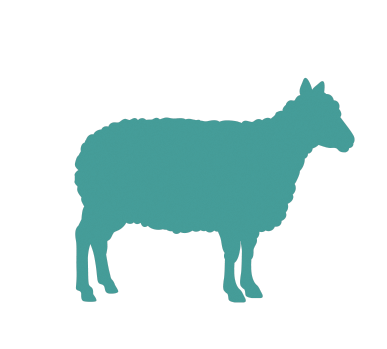 Lamb
Lamb Turkey
Turkey Duck
Duck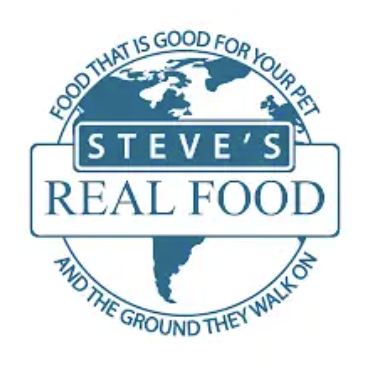 All Products
All Products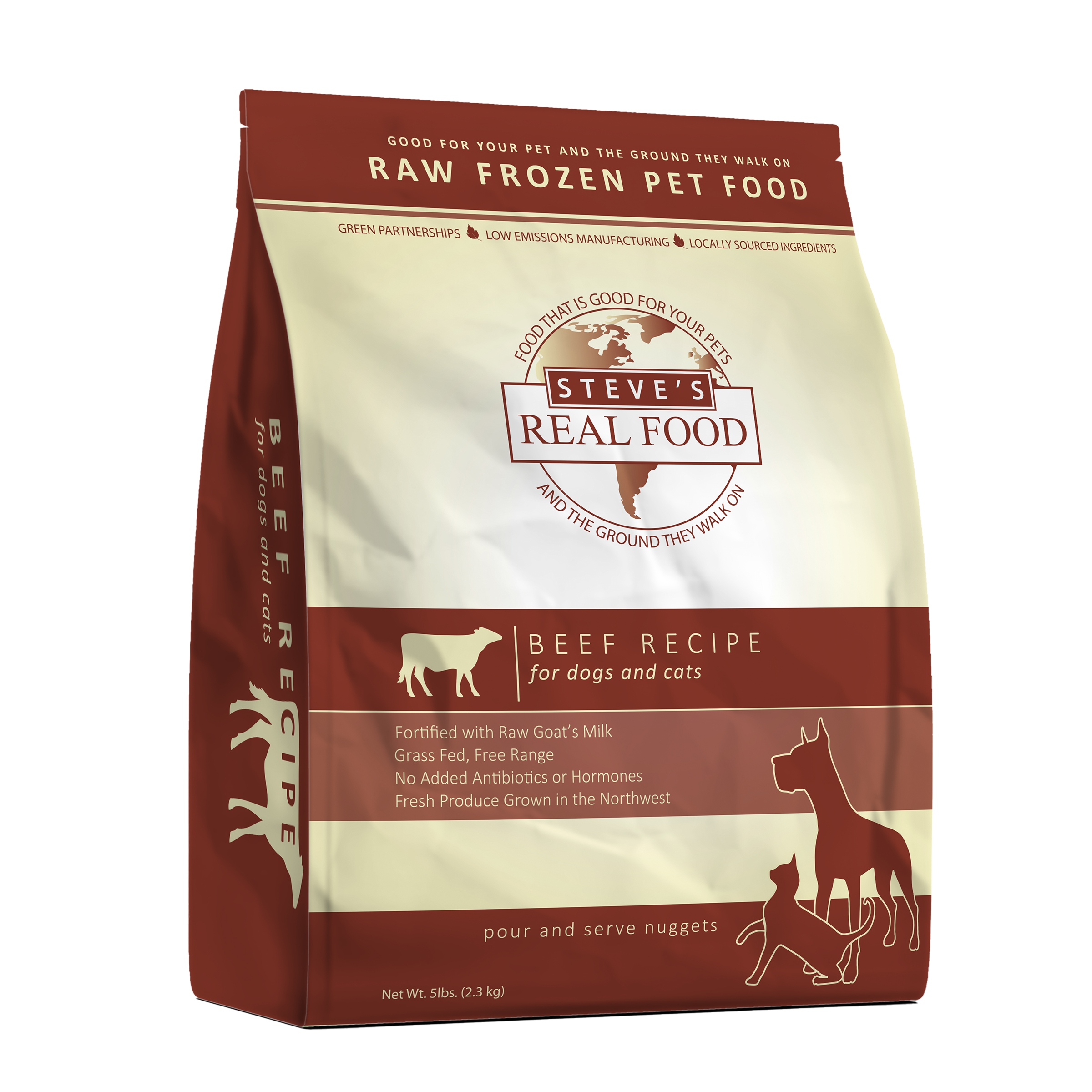 Frozen Raw Pet Food
Frozen Raw Pet Food
 Freeze Dried Raw Pet Food
Freeze Dried Raw Pet Food
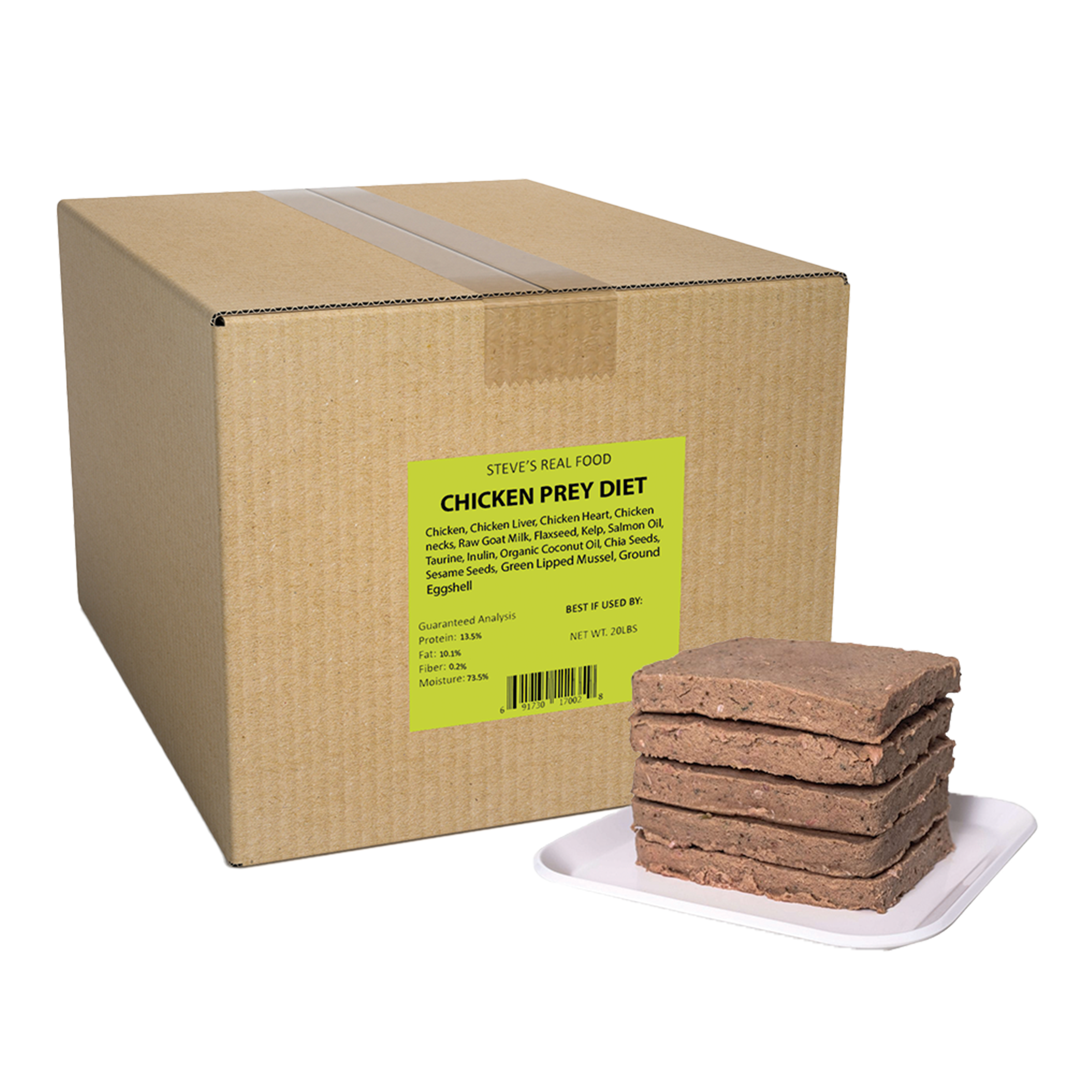 Frozen Prey Diet
Frozen Prey Diet
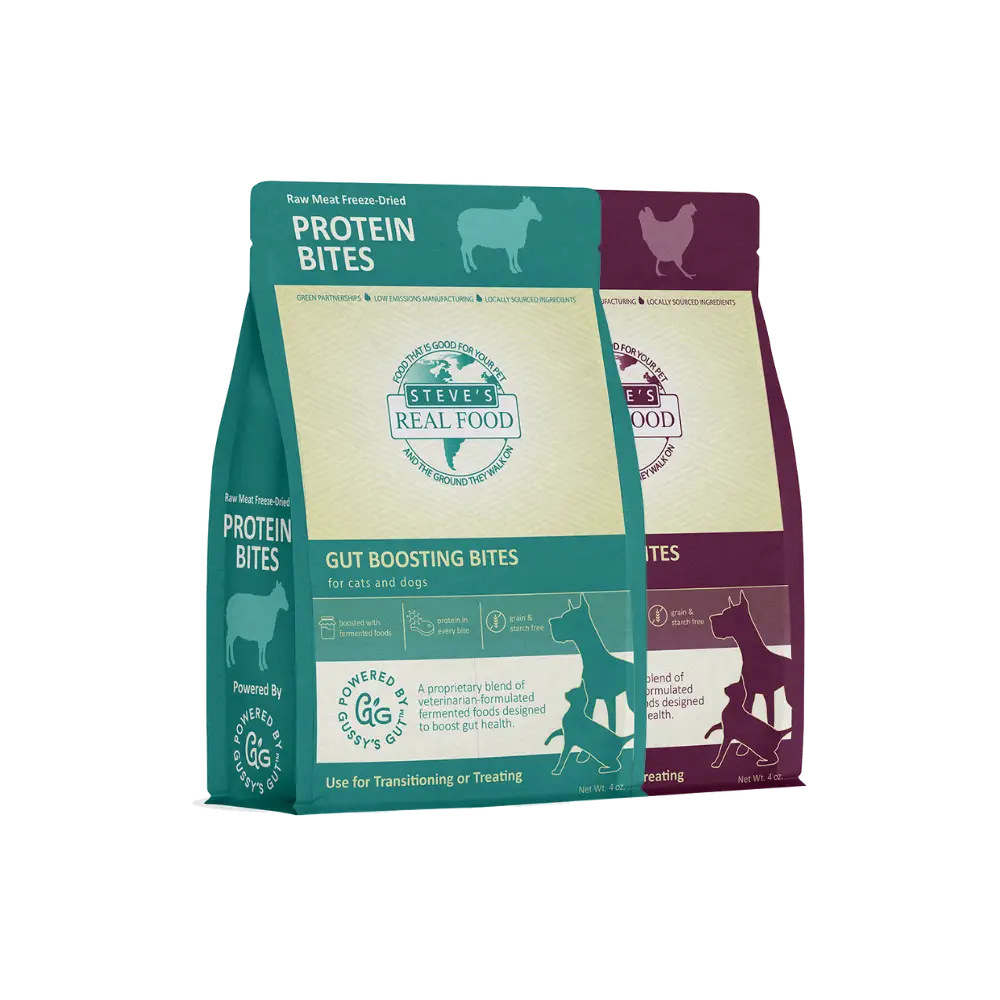 Freeze Dried Protein Bites
Freeze Dried Protein Bites
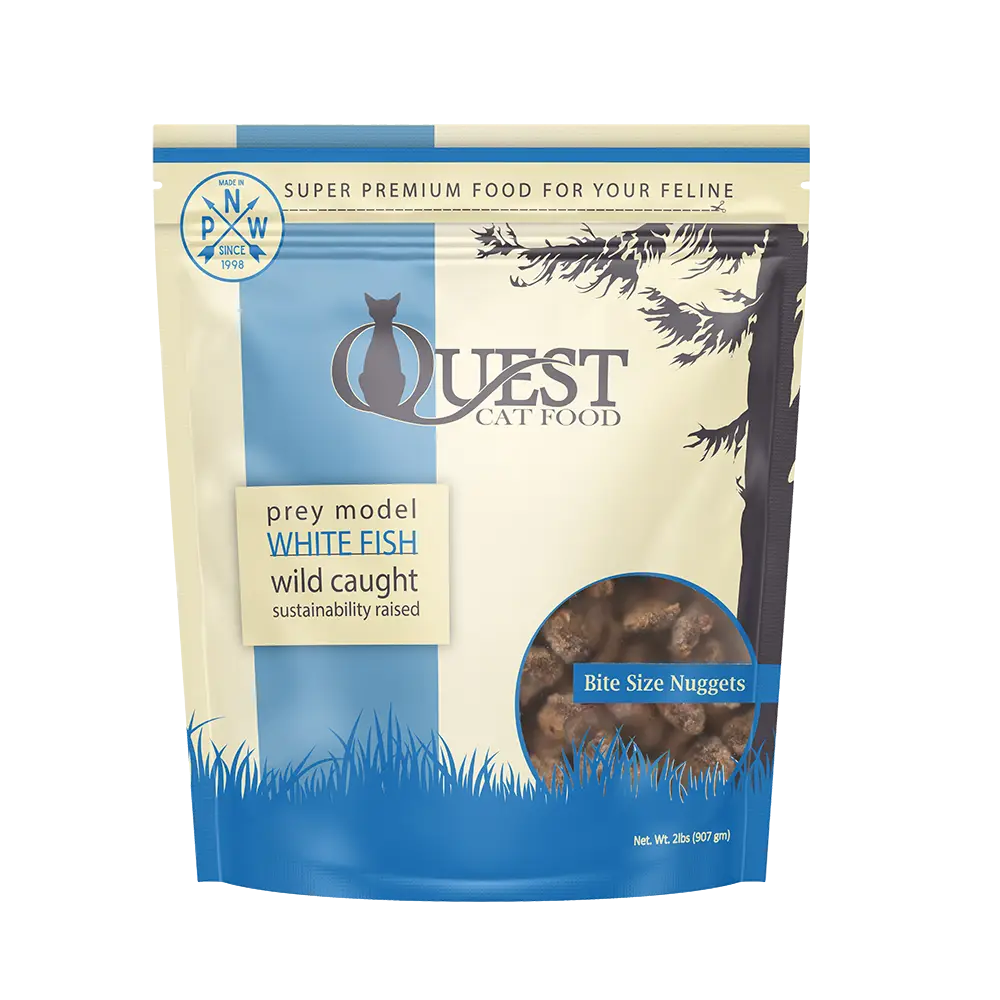 Frozen Quest
Frozen Quest
 Freeze Dried Quest
Freeze Dried Quest
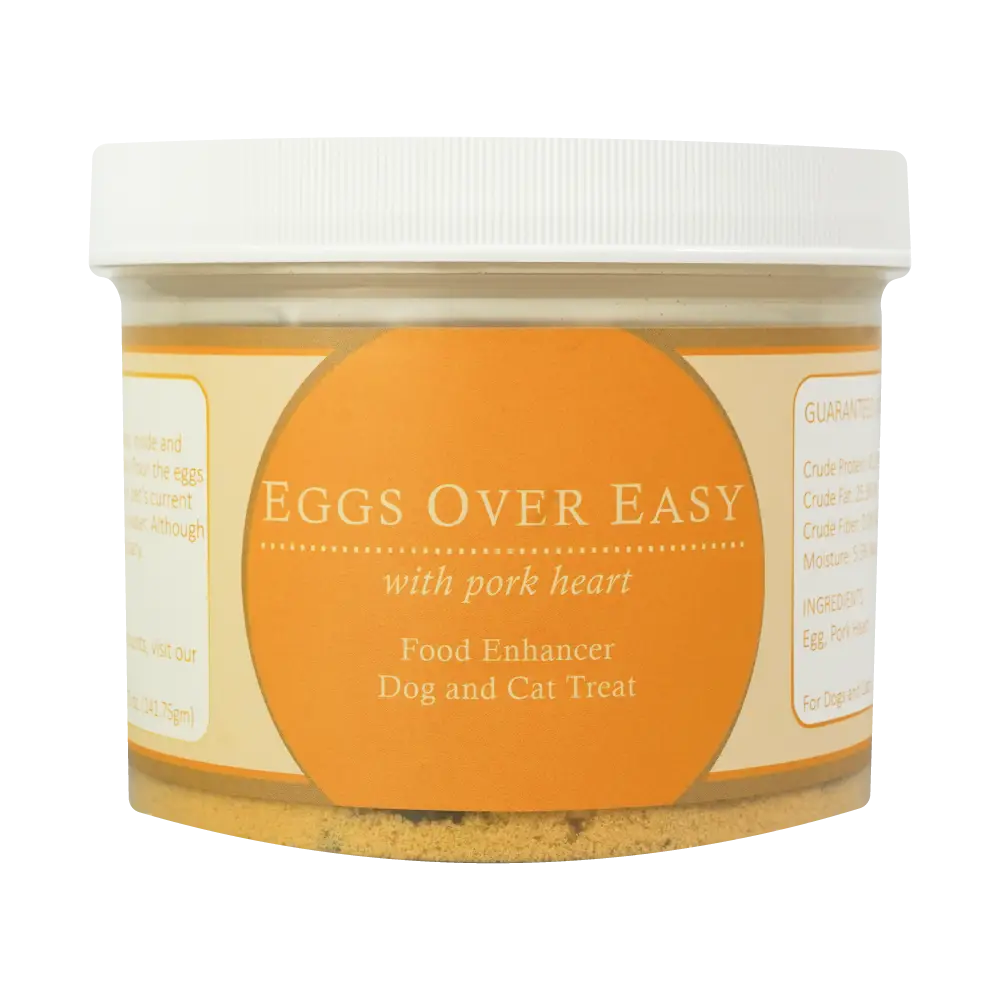 Eggs over Easy
Eggs over Easy
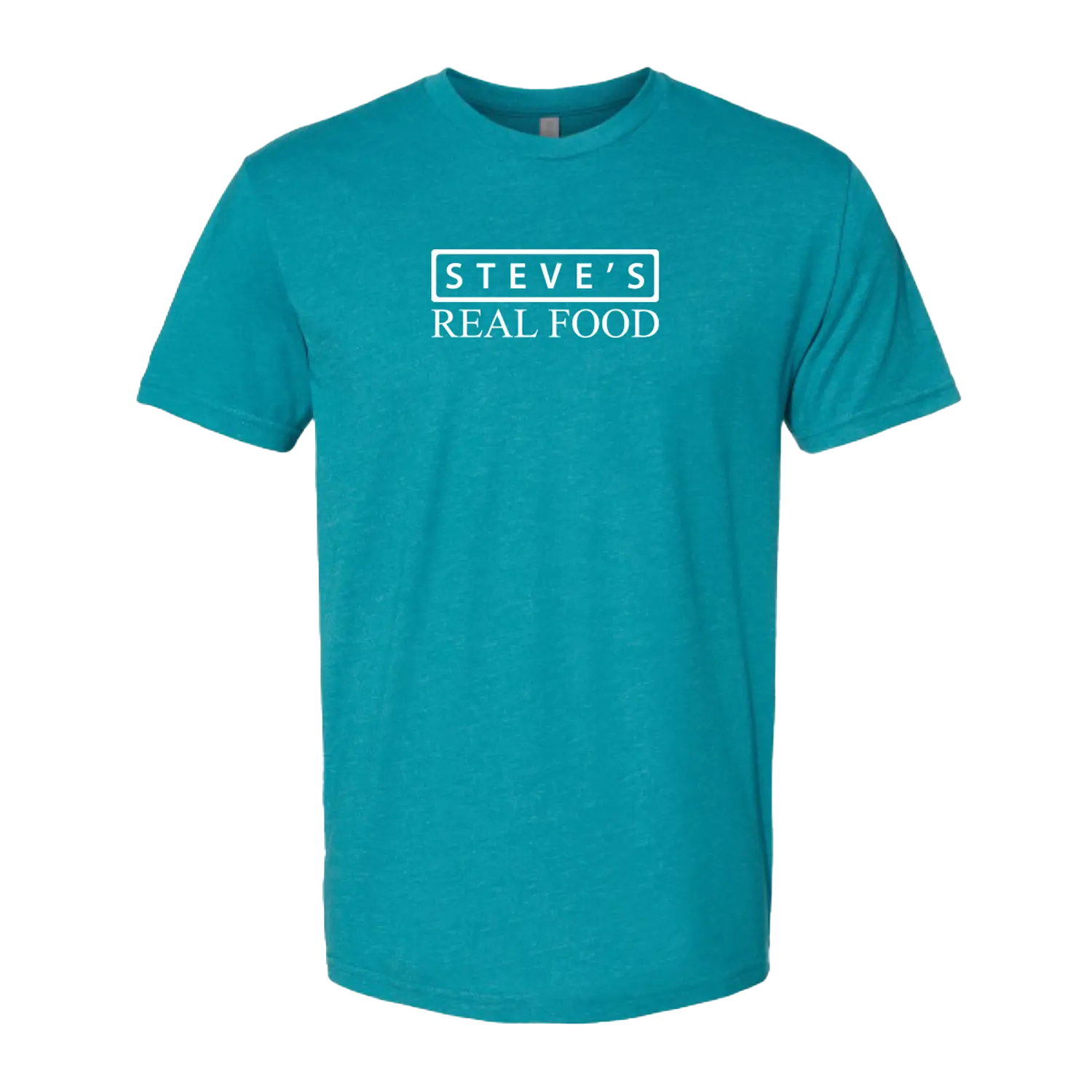 Steve's Merch
Steve's Merch 